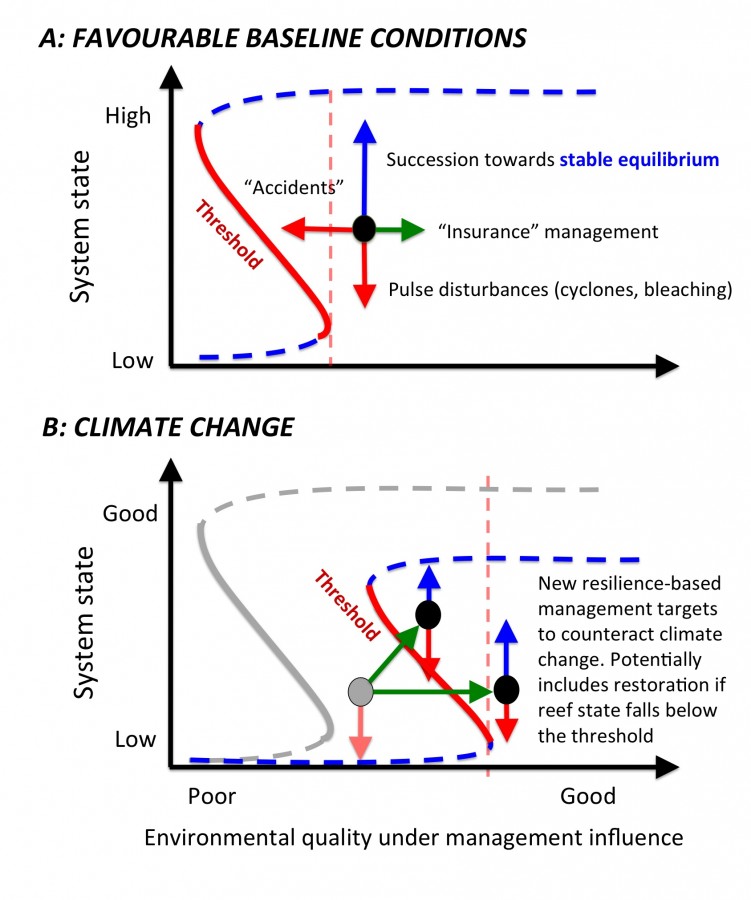Resilience under climate change

Notes
Description
Figure shows drivers of change in reef state (y-axis), depicted by the black ball, along a gradient of manageable environmental pressures (x-axis) under favourable baseline CO2 conditions (A) and with climate change imposed (B). Under the baseline scenario, the dynamic reef system will shift between being perturbed by pulse disturbances (red arrows) and recovery (blue arrows) towards the system equilibrium (blue dashed line). Here, the key management challenge is to maintain the environmental quality high to keep the system in a safe distance from the threshold (red solid line). Environmental accidents (e.g. periods of poor water quality) shifting the system to the left of the vertical red dashed line indicates that the system is now in an alternate stable state regime awhich can lead to a phase shift (e.g. from corals to algae). Under climate change (and ocean acidification, panel B) the environmental threshold moves to the right and the coral carying capacity of the system is suppressed. This raises the bar for managers, as the challenge is now to further improve the environmental conditions so that the system is maintained to the right of, or above, the treshold. Where the system drops below the threshold (red solid line) it is now likely to gravitate towards zero coral cover as the new stable equilibrium. In such situations restoration efforts should be considered part of the management options.



